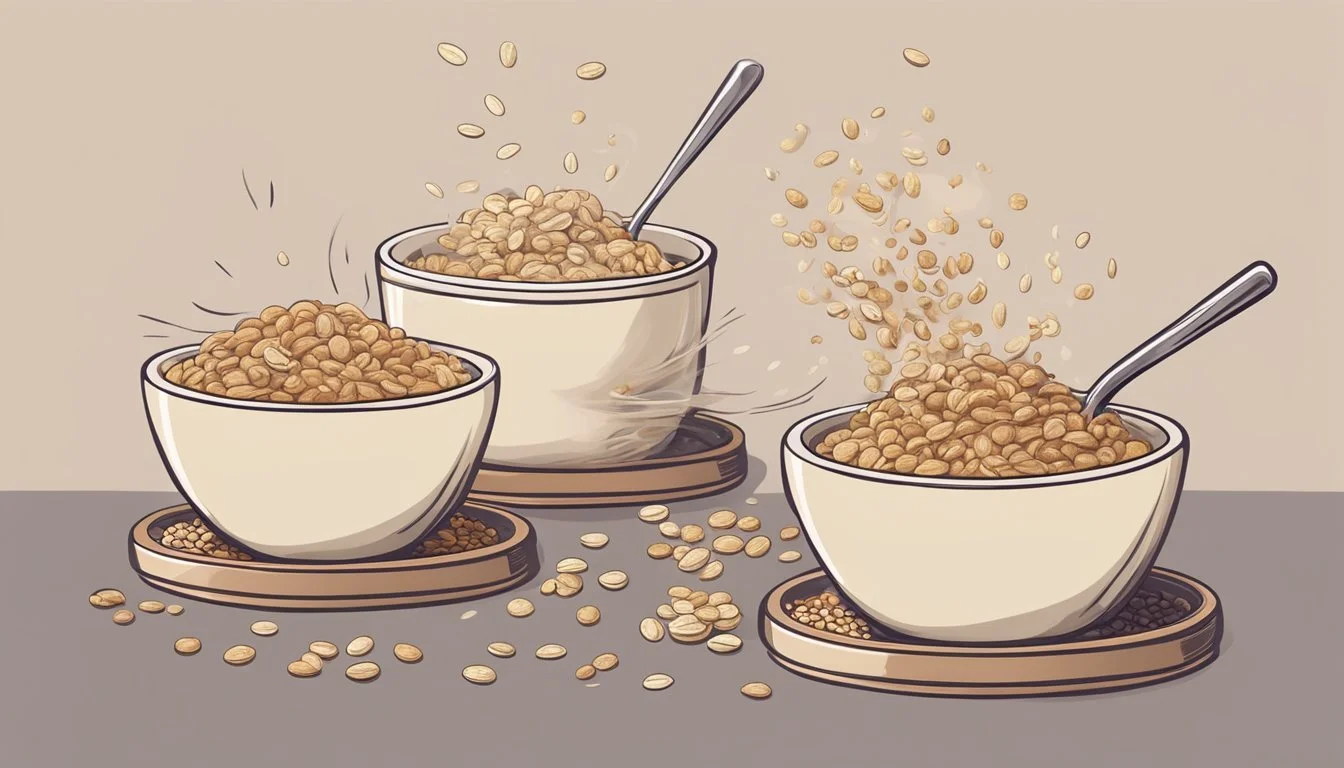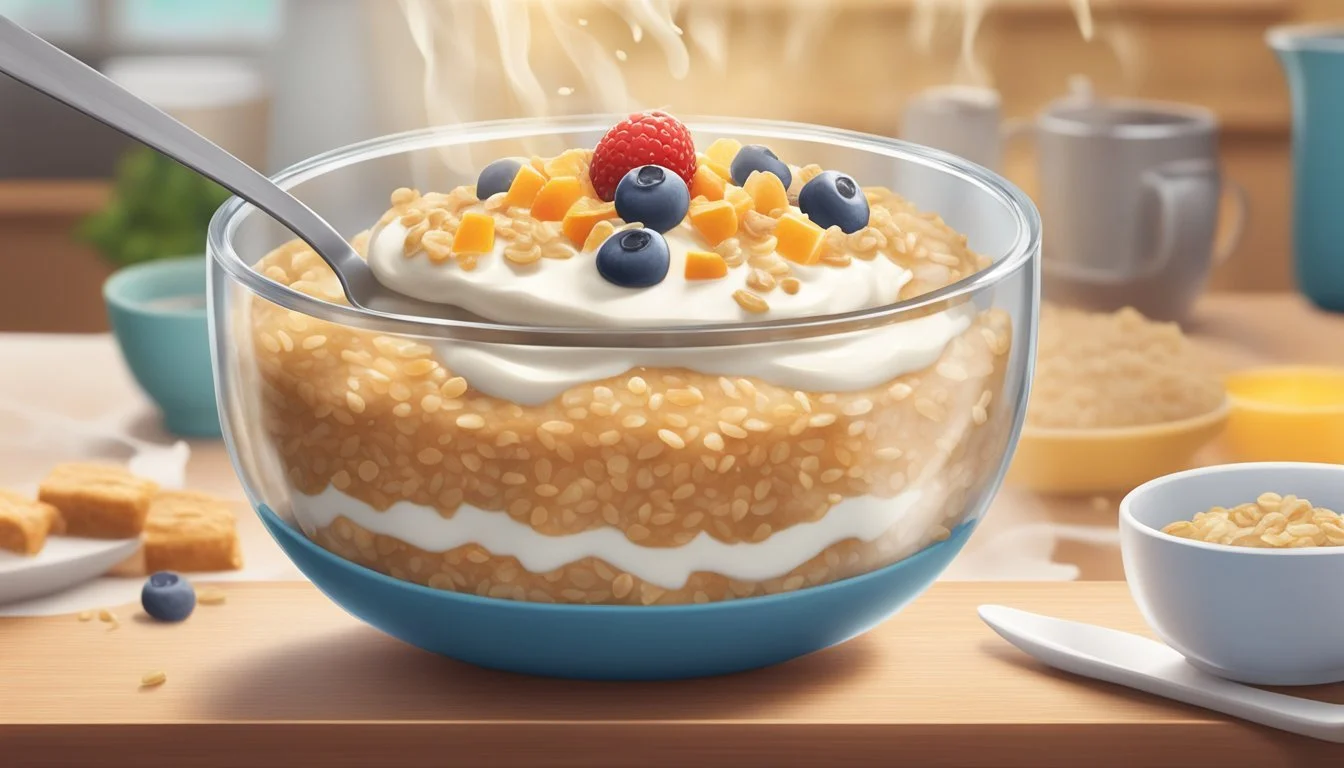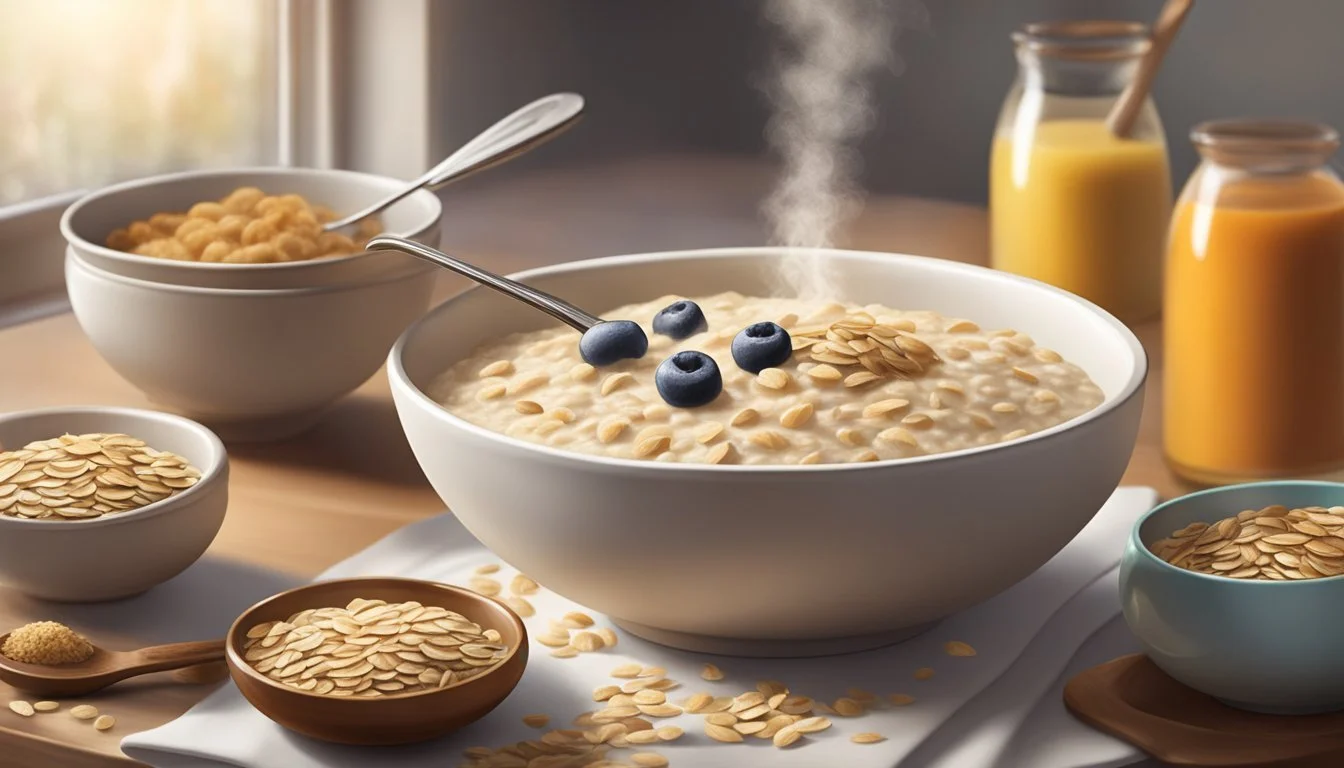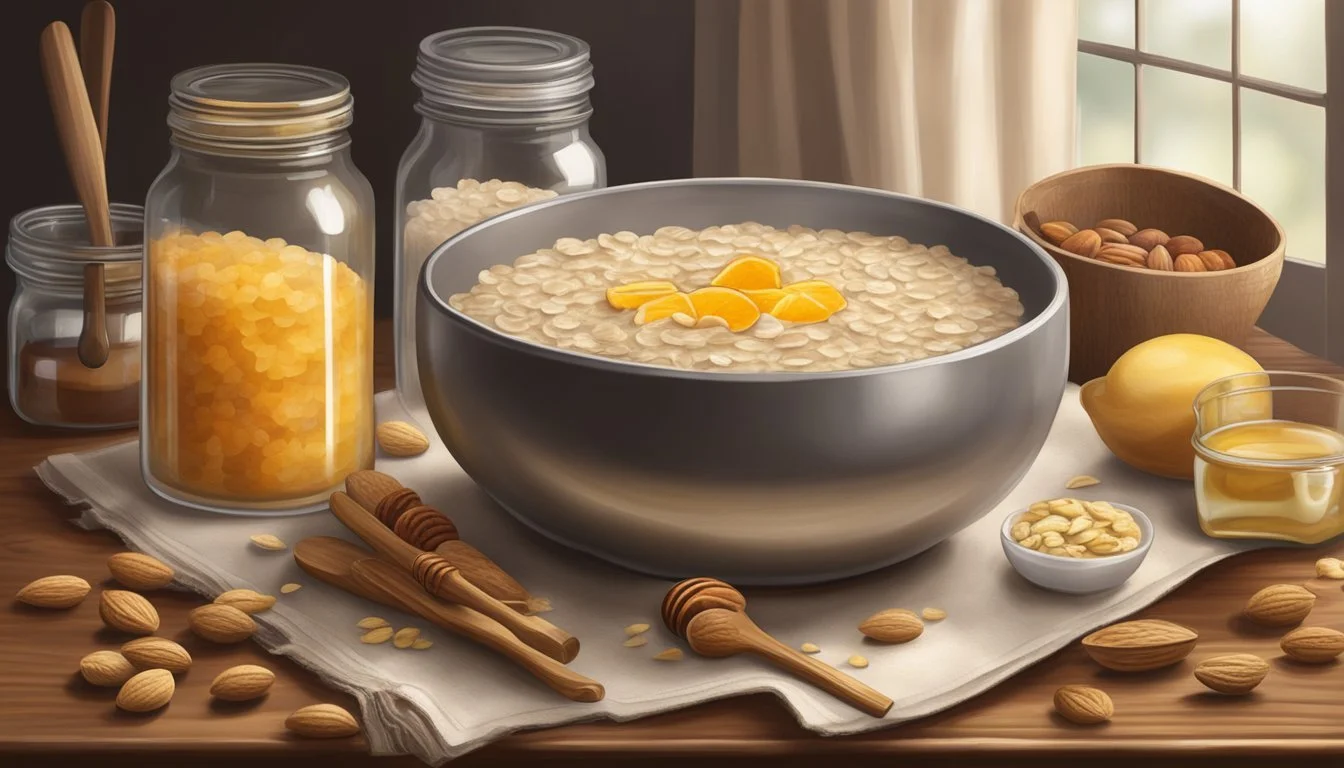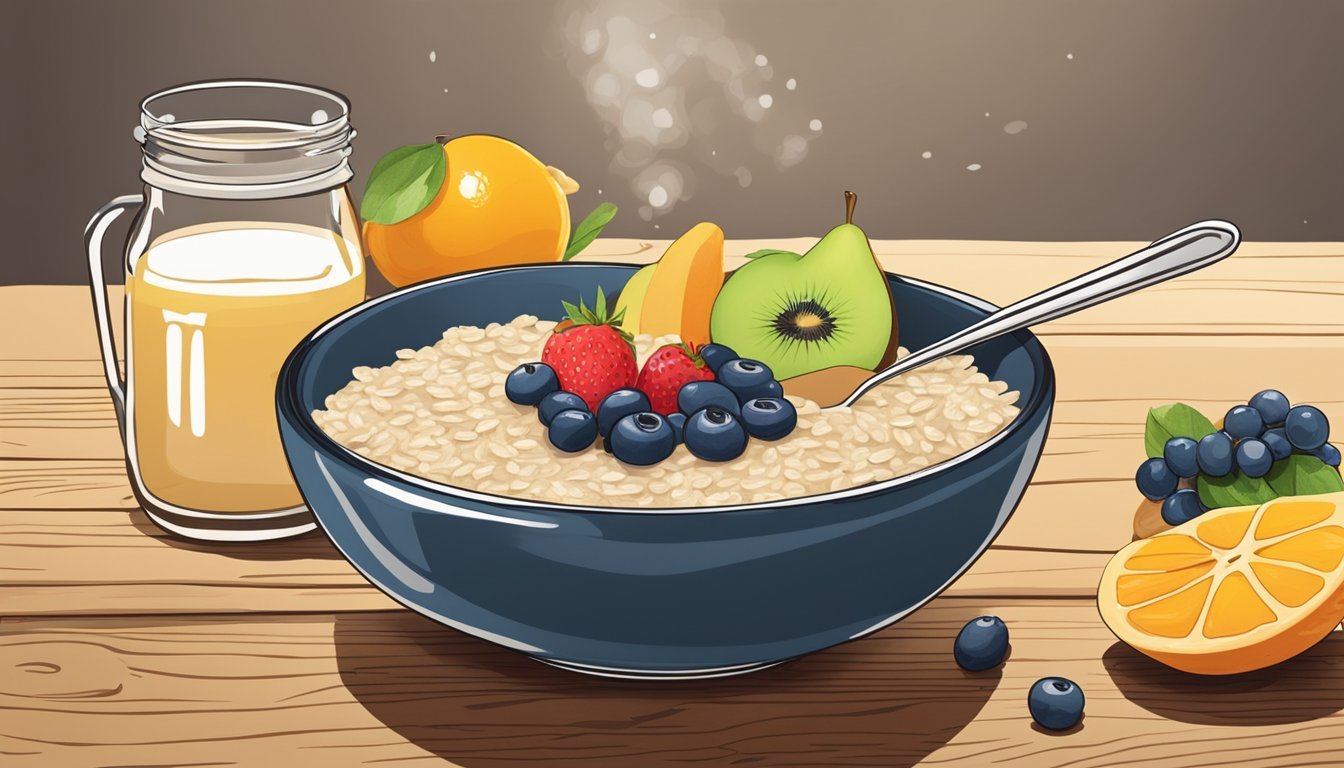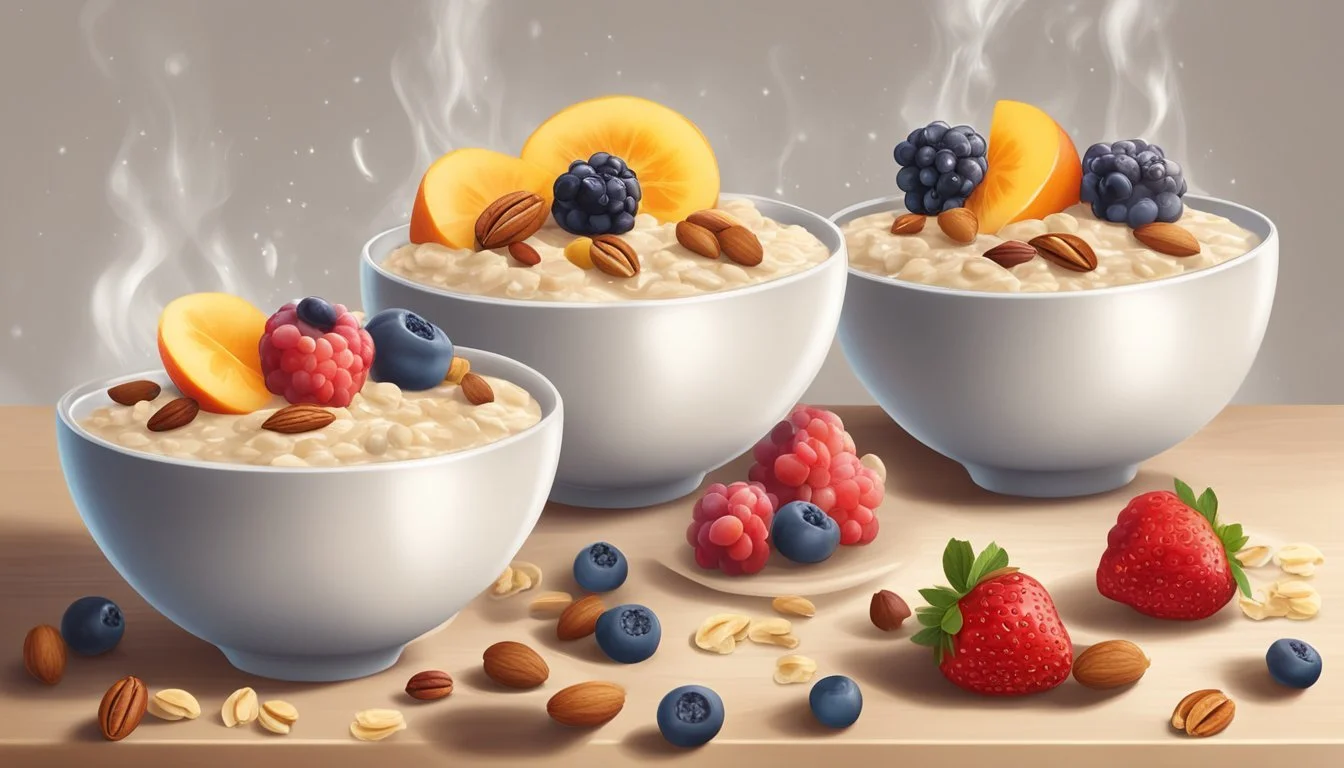Saving Overcooked Oatmeal
Tips for Creating Creamy, Comforting Breakfast Bowls
Overcooked oatmeal doesn't have to mean a disappointing start to the day. With a few clever fixes, a seemingly ruined pot of oatmeal can be transformed back into a creamy and comforting breakfast bowl. Oatmeal, a staple in many households for its health benefits and versatility, can occasionally suffer from a moment’s distraction during cooking, resulting in a texture that is less than appealing. However, all is not lost; overcooked oatmeal can be salvaged with the addition of a few simple ingredients that most people have in their kitchen.
Rescuing overcooked oatmeal starts with understanding its capacity to absorb flavors and liquids even after the standard cooking process. By incorporating extra liquid, such as milk or a milk substitute, the oatmeal can often regain its beloved creamy consistency. Additionally, the inclusion of flavorful mix-ins like fruits, nut butter, or a swirl of honey can not only distract from any textural mishaps but can actually enhance the overall taste of the dish. It's not just about saving a meal; it's about elevating it to a comforting culinary experience.
These methods are not only practical but also encourage creativity and reduce food waste. They serve as a reminder that a cooking misstep can be an opportunity to innovate and that a hearty bowl of oatmeal is a forgiving canvas for the resourceful cook. Whether one is cooking for themselves or a family, these solutions ensure that a wholesome, tasty breakfast is always within reach, even when things don't go quite as planned.
Understanding Oatmeal Basics
When preparing oatmeal, it's important to choose the right type of oats for your desired texture and to understand the health benefits that this nutritious breakfast can provide.
Types of Oats and Their Textures
Oats come in various forms, each undergoing different processes and offering unique textures:
Steel-Cut Oats: These are whole oat groats that have been chopped into pieces. They offer a chewy texture and a nutty flavor, taking longer to cook compared to other types.
Old-Fashioned Rolled Oats: Also known as old fashioned oats, these oats are steamed and rolled flat. They are a middle ground between steel-cut and quick oats, providing a creamier texture that cooks reasonably quickly.
Quick Oats: These oats are cut, steamed, and rolled even thinner than old-fashioned oats, allowing them to cook very rapidly. They offer a softer texture, which might tend towards mushiness if overcooked.
Instant Oats: The most processed form, instant oats are pre-cooked, dried, and then rolled. They cook the quickest but are also the softest and can turn gluey if not carefully monitored during cooking.
Each type of oat maintains its basic nutritional profile, yet they differ in glycemic index and digestion times due to their texture differences.
Health Benefits of Oatmeal
Oatmeal is hailed for its health benefits, largely due to its nutritious composition:
Fiber: Oats are rich in soluble fiber, particularly beta-glucan, which can help lower cholesterol levels and promote a healthy gut.
Protein: They provide a decent amount of protein, essential for muscle repair and overall health.
Healthy Fats: Oats contain more fat than most other grains, but they're healthy unsaturated fats that can support heart health.
Gluten-Free: While oats are naturally gluten-free, it’s important to choose oats that are certified gluten-free if you have a gluten intolerance, as cross-contamination can occur during processing.
This nutrient-dense food can be a staple in a balanced diet, offering not only a hearty breakfast option but also potential long-term health benefits when consumed regularly.
Initial Preparation of Oatmeal
Preparing oatmeal properly is key to achieving a creamy and comforting breakfast. Selecting quality ingredients, nailing the liquid-to-oat ratio, and timing the cooking process right are all vital steps to ensure your oatmeal has the perfect texture.
Choosing the Right Ingredients
The foundation of a great oatmeal starts with the oats themselves. One should opt for whole rolled oats for a traditional texture or steel-cut oats for a chewier bite. The freshness of the oats can also contribute significantly to the final taste and texture of the dish.
Ideal Liquid-to-Oat Ratio
The liquid-to-oat ratio is critical for obtaining the desired consistency. For rolled oats, a 2:1 ratio of liquid to oats is commonly used. That means, for every cup of oats, one would use two cups of liquid, such as milk for creaminess or water for a lighter dish. Steel-cut oats require more liquid, typically three to four times the amount of oats.
Oat Type Water Ratio Milk Ratio Rolled Oats 2:1 2:1 Steel-Cut Oats 3:1 to 4:1 3:1 to 4:1
Cooking Times for Perfect Texture
Rolled oats take approximately 5 minutes to cook once the liquid has reached a boil. For steel-cut oats, the cooking time can extend to about 15 to 30 minutes depending on the desired consistency. Regular stirring is recommended to prevent sticking and to ensure an even texture throughout.
Rescuing Overcooked Oatmeal
Sometimes oatmeal can tip over from perfectly fluffy to a pasty mush. However, even when overcooked, oatmeal can be brought back to a palatable state with a few quick adjustments focusing primarily on consistency and flavor.
Adjusting the Consistency
If oatmeal has become too dense or dry from overcooking, one can loosen it by adding water in small increments until reaching the desired consistency. For those who prefer a thicker, creamier texture, incorporating milk or a milk alternative like coconut milk can revive the oatmeal's body without diluting its flavor. It's essential to stir gently after each addition and heat the oatmeal to the desired temperature.
Addition Result Water Lightens the texture, lessens denseness Milk Adds creaminess, enriches flavor Coconut Milk Introduces a subtle sweetness and creaminess
Enhancing Flavor and Creaminess
Once the consistency is nearer to what one desires, enhancing the oatmeal’s creaminess and flavor is the next step. Stirring in a dollop of cream can immediately elevate creamy oatmeal to the next level. For non-dairy alternatives, nut butters or a spoonful of coconut cream offer richness and depth.
Sweet Enhancers: A drizzle of honey, maple syrup, or a sprinkle of brown sugar.
Savory Boosters: A pinch of salt, a dash of cheese, or chopped nuts for texture.
Through these methods, oatmeal that's seen better days can be deliciously saved and savored once again.
Customizing Your Oatmeal
Creating the perfect oatmeal bowl is an opportunity to tailor your breakfast to your exact flavor preferences and nutritional needs. By incorporating a variety of sweeteners, fruits, nuts, and seeds, one can transform a simple oatmeal recipe into a delightful meal.
Sweet and Savory Variations
To adjust the sweetness of oatmeal, one can experiment with different sweeteners. Brown sugar lends a rich, molasses-like flavor, while pure maple syrup offers natural sweetness with a hint of woodsy taste. Vanilla extract can be stirred in for an aromatic depth. For those enjoying the contrast of sweet and savory, a pinch of salt enhances the flavor profile.
Sweet Variations:
Maple syrup: Adds sweetness with a complex flavor.
Brown sugar: Contributes a deep, caramel-like sweetness.
Vanilla extract: Provides a sweet, floral note.
Savory Variations:
A sprinkle of salt to balance the sweetness.
A tablespoon of nut butter, like almond or peanut butter, for a rich and savory twist.
Adding Nutrients with Toppings
To boost the nutritional value, consider topping your oatmeal with a selection of fruits, nuts, and seeds. Fresh berries bring bursts of flavor and antioxidants, while dried fruits offer a concentrated sweetness and chewy texture. Nuts like almonds and seeds such as chia or flaxseeds add essential fats and a satisfying crunch. For additional protein and healthy fats, a dollop of nut butter can be stirred in.
Nutrient-Rich Toppings:
Fruits: Fresh or dried options such as bananas, apples, or raisins.
Nuts and Seeds: Almonds, walnuts, or a sprinkle of hemp seeds.
Nut Butters: Creamy or crunchy options like peanut butter or almond butter.
By personalizing the oatmeal bowl with these sweet and savory variations, as well as nutrient-dense toppings, one ensures a satisfying, healthy, and tailored breakfast experience.
Enhanced Nutrition and Diet Considerations
In addressing overcooked oatmeal, the section focuses on enhancing the nutritional value while considering dietary needs and preferences. It includes options for various diets and outlines the importance of managing both macronutrients and micronutrients.
Low-Calorie and High-Protein Options
For individuals monitoring their calorie intake, overcooked oatmeal can still serve as an ideal breakfast choice. A serving size of 1/2 cup of rolled oats contains approximately 150 calories. To boost protein levels without drastically increasing calories, one can incorporate high-protein, low-fat additions such as:
Non-fat Greek yogurt: Provides additional protein and can make the overcooked oatmeal creamier.
Chia seeds: 1 tablespoon adds around 2 grams of protein and 4 grams of fiber, enhancing the oatmeal's satiating power.
Managing Macro and Micronutrients
Oatmeal provides a balance of macronutrients, with a typical serving containing about 27 grams of carbohydrates, 5 grams of protein, and 3 grams of fat. The fat is heart-healthy, being mostly polyunsaturated and monounsaturated fats.
Regarding micronutrients, oats are rich in minerals like iron, potassium, and magnesium, and contain a notable amount of calcium. To enrich oatmeal further, individuals can add fruits that are high in vitamin C, such as strawberries, to foster iron absorption.
Catering to Special Diets
Oatmeal naturally caters to a variety of special diets:
Vegan: By nature, oats are vegan-friendly. However, one must ensure that any additives, such as milk substitutes, are also vegan.
Gluten-free: Oats are inherently gluten-free but should be certified as such to avoid cross-contamination concerns.
Lower Sodium: Oatmeal is a low-sodium food, but for individuals looking to further reduce their sodium intake, it's important to avoid adding high-sodium toppings or ingredients.
Adding healthy fats such as nuts or seeds is a way to increase satiety and nutrient density for those following heart-healthy diets. They contribute beneficial unsaturated fats and can help manage cholesterol levels.
Convenient Oatmeal Preparation
Making oatmeal convenient doesn't mean sacrificing quality. By using efficient techniques and proper storage, individuals can enjoy a warm, comforting bowl of oatmeal with minimal effort and time.
Techniques for Fast and Easy Meals
Quick oats offer a rapid solution for a hearty breakfast, cooking in about 5 minutes on the stovetop or in a microwave. They've been pre-cooked and pressed slightly thinner to cut down on prep time without compromising the texture.
Stovetop: For those mornings when one has a few extra minutes, stovetop cooking allows for better control over the consistency.
Bring water or milk to a boil.
Add quick oats and reduce to a simmer, cooking for about 5 minutes.
Microwave: When convenience is paramount, quick oats can be prepared in the microwave, often in half the time.
Combine oats with water or milk in a microwave-safe bowl.
Cook on high for about 2-3 minutes, stirring halfway.
Meal Prep and Storage Tips
Overnight oats are the epitome of meal prep, requiring no morning cooking time. They simply need to be assembled with milk or a milk alternative, sweeteners, and any desired mix-ins the night before and left in the fridge to soften.
Meal Prep:
Combine rolled oats with liquid and preferred additives in a jar.
Seal and store in the refrigerator, typically maintaining good quality for 4-5 days.
Storage Tips:
Store oatmeal in an airtight container to retain freshness.
Prepared oatmeal can have a long storage life if kept properly chilled.
By adhering to these techniques and tips, oatmeal can consistently serve as a quick, nutritious breakfast option, proving that one doesn't have to trade convenience for quality.
Making the Most of Leftovers
Transforming overcooked oatmeal into new, tasty dishes is both an art and a strategic way to reduce food waste. With a bit of creativity, leftover oatmeal can become the star ingredient in various mealtime creations, from breakfast to dinner.
Transforming Oatmeal into New Dishes
Transforming your oatmeal leftovers is a straightforward process that involves repurposing the base into several appealing dishes. Breakfast bowls are perhaps the most straightforward option, providing a canvas for an array of toppings and flavors. A diner can rejuvenate yesterday's oatmeal simply by warming it up and adorning it with fruits, nuts, or a drizzle of honey. For an interesting twist, leftover oatmeal can be made into crispy granola. By mixing it with a combination of nuts, seeds, and sweeteners, then baking until golden, one creates a crunchy topping for yogurt or a standalone snack.
Here are some quick ideas:
Oatmeal Pancakes: Incorporate into the batter for a moist texture.
Oatmeal Muffins: Stir into muffin mix for a fiber-rich treat.
Oatmeal Bars: Combine with honey or peanut butter, press into a pan, and bake.
Savory Options Beyond Breakfast
Leftover oatmeal need not be confined to sweet applications; it can boldly venture into the realm of savory meals.
Fried Egg with Oatmeal: A simple yet satisfying dish involves topping reheated oatmeal with a fried egg, cherry tomatoes, and a sprinkle of cheese for a protein-packed start to the day.
Oatmeal Patties: Combine oatmeal with grated cheese, form into patties, and pan-fry until crisp for a hearty and delicious meal base or side.
Stuffed Tomatoes or Peppers: Mix oatmeal with pesto, herbs, and chopped vegetables, then use the mixture to stuff tomatoes or peppers before baking.
A bowl of savory oatmeal can further be elevated by adding slices of avocado, a perfectly poached egg, or a dollop of pesto, transforming it into a dish that defies the boundaries of traditional breakfast.
Final Touches for a Perfect Meal
Once oatmeal is cooked to a creamy texture, it's time to enhance the dish with thoughtful presentation and thoughtful accompaniments. This section will guide readers on how to serve up their oatmeal in a visually appealing way, and on pairing options that can transform oatmeal into a hearty and delicious meal.
Plating and Presentation
The visual appeal of oatmeal can be markedly improved with simple plating techniques. For a touch of elegance, one could use a deep bowl, allowing for a generous serving that shows off the oatmeal's creamy consistency. To personalize the dish, an array of toppings like a sprinkle of cinnamon, a drizzle of honey, or a spoonful of coconut flakes can add both texture and flavor. A garnish of fresh fruit or a sprinkle of seeds or nuts can provide a final boost of both nutrition and appearance.
Toppings:
Fruit: Sliced bananas, berries, apple chunks
Sweeteners: Honey, maple syrup, brown sugar
Texture Enhancers: Chopped nuts, coconut flakes, chia seeds
Pairing with Drinks and Sides
An oatmeal breakfast offers versatility and pairs well with a variety of drinks and sides. For beverages, a cup of smooth, velvety coffee or a delicate herbal tea can complement the creaminess of the oatmeal. Offering a dairy or plant-based milk, such as almond or coconut milk, provides a nutritious side that harmonizes with the warm flavors. On the side, consider serving whole-grain toast, a savory egg dish, or fresh fruit for a rounded and nutritious meal.
Beverage Pairings:
Coffee: A robust espresso or a latte
Tea: Green tea, chamomile, or mint
Side Pairings:
Protein: Hard-boiled eggs or Greek yogurt
Breads: Whole-grain toast or English muffins
Through careful plating and pairing, oatmeal can be transformed from a simple dish into a delightful and nutritious meal, bursting with flavor and variety.

